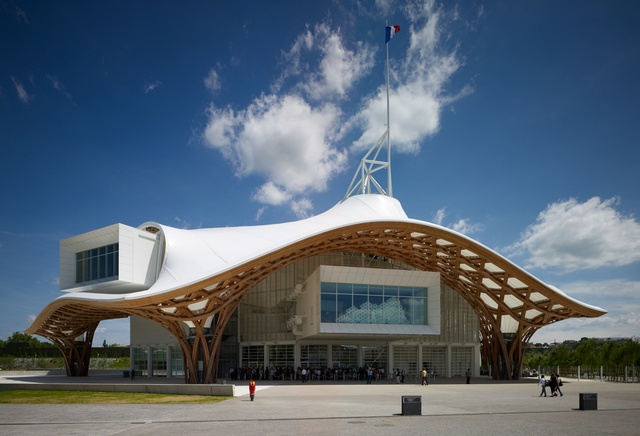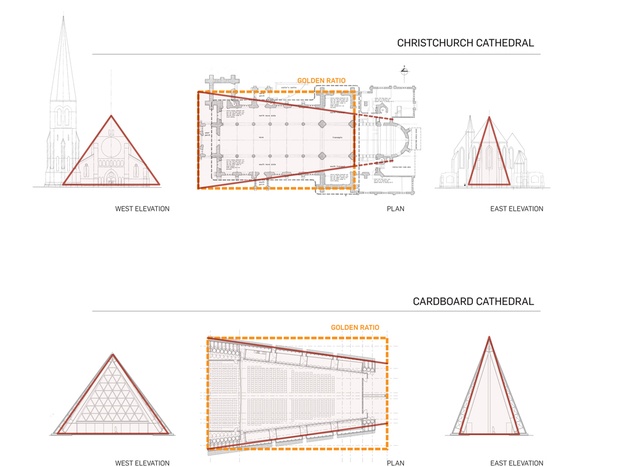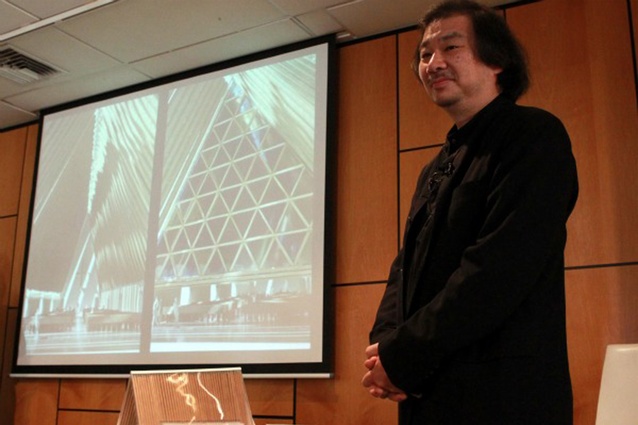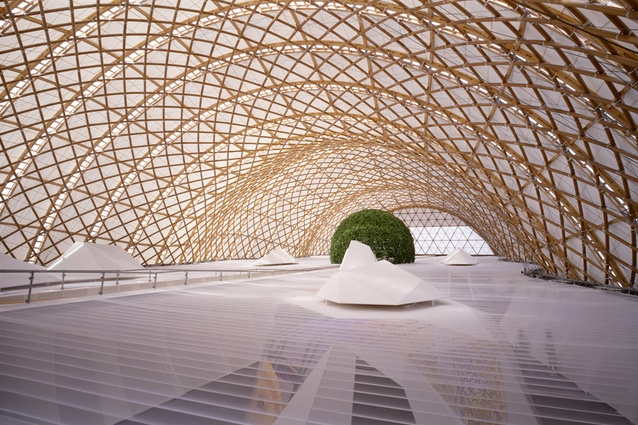Architect Shigeru Ban’s temporary cathedral for Christchurch
One of the world’s most influential architects recently unveiled a proposal for a temporary cathedral in Christchurch.
Urbis: Why did you choose to go into architecture?
Shigeru Ban: I wanted to be a carpenter when I was small. When I was small, I didn’t know the profession of architecture existed. I saw carpenters making the building.
U: Why did you decide to study architecture in the United States rather than in Japan?
SB: Because I saw the work of John Hejduk, who worked at the school I graduated from, Cooper Union, and I was really amazed at his work. He was teaching at Cooper Union as the dean of the school. So I wanted to study under him.
U: Do you think that has given you quite a multicultural approach to architecture?
SB: No, I just do whatever I usually do. I never analyse myself.
U: Architecture has become increasingly globalised, but some say that local architects can better interpret the local environment. You work a lot in other countries (and have offices in New York and Paris as well as Tokyo) and you have recently been designing this Christchurch project. How do you deal with creating architecture in a foreign place?
SB: Well, it depends. Some architects just design funny shapes, sculptural shapes, whatever it is, without respecting the context. I always try to understand the local context, the local environment, the local material – when available. That’s my style. But some architects don’t care about it.

U: Why do you think architecture is important?
SB: Well, I don’t think a building is important, I think the human life is more important. That’s why even if the building is destroyed by earthquake, doesn’t matter, as long as people are safe. But also … to spend every day, the space has to be comfortable and beautiful, and give a different experience day to day. Depending on the weather conditions, seasons.
Architecture is space. Space is made by the form. But the form is more important for many people. Normally architects work for privileged people, rich people, big corporations. They care about the form because that is representative of their power and money. But the most important thing is not the form, but the space made by the form.
U: In many of your projects the architecture challenges how people might live in a space. Your Curtain Wall House, for example [a house in Tokyo with a fabric curtain around the perimeter to create privacy].
SB: No, I don’t think so. I have my own style. The client who likes my style asks me to design. I’m not pushing my style; only clients who like my style come to me. So I don’t need to convince them. Whatever I propose they like it. Particularly in a residential project, I’m designing a house for a particular client who has come to me, who liked my style. It might be challenging, but it’s not an unexpected thing.
U: When you were first commissioned to do this project, what did you notice about Chistchurch that was unique?
SB: The most important thing was the geometry of the original cathedral. I wanted to make the temporary cathedral have some relationship to the original geometry of the design. So I analysed the ground plan and the elevations to pick up some important geometry to use for the new proposal. Also, this is a totally different form [to the 19th century cathedral) but I used the geometry from the original design.
U: So how did you take the original geometry and translate it into the new form?
SB: Here, I will show you. [Ban pulls out presentation documents that have clear red triangle and trapezoid shapes drawn over the cathedral elevations.] The triangle came from this triangle [points to the eastern elevation of the cathedral, see page 45] and this form came from here [he shows the narrowing trapezoid form in the plan], and this triangle in the back came from this triangle here [he points to the western elevation]. But also, before I came here, I already had the idea of the triangle form, but this particular triangle is from the church. The triangle is the easiest way to make a very stable shape. Because we have to make this very quickly and inexpensively that is why I was thinking, originally, of making a triangle shape.

U: Going back to the proposed temporary cathedral for Christchurch, you are proposing to use cardboard tubes for this project. Some people are surprised that you can even use cardboard in building. Why do cardboard tubes make a good building material?
SB: First of all, a building can be made with anything. Even plastic or paper or fabric, anything. But people have a prejudice. People think that paper is weak, but that’s not true. Paper is an industrial material. Wood is a natural material, so it’s more difficult to control. Paper is an industrial material, so it’s easier to make it fire protected or waterproofed. But people have a prejudice against paper. That’s why people are surprised, but anything can be a material for architecture.
U: Do you ever use other unusual materials in your architecture?
SB: I never thought paper was unusual. Because it’s wood. I’m just using an existing material differently. And also, the durability of the building has nothing to do with the strength of the material. Even a building made of concrete can be destroyed by an earthquake easily but a building made of paper cannot be destroyed by earthquake. Even a building made in concrete, if it is made to make money by a developer, after a few years, a developer can tear it down again, so it is very temporary. But the paper church I built after the earthquake in Kobe, I built it in 1995, it was there 11 years and now it has moved to Taiwan, and it has become a permanent church. Even a concrete building, as long as it is made to make money, it is very temporary. The building made of paper can be permanent because the people love it.
People have to see it. It is the same thing, before I have built anywhere people have the same questions, but after it’s built, people recognise how strong it is, how beautiful it is, how durable it is.
U: How did you get into designing these projects for post-earthquake hit areas?
SB: I was very disappointed about the profession of architecture when I became an architect. Because, as I said, we were mainly working for the privileged people, and I thought that architects as a profession could work more for the general public or even those who are very poor. So that’s why I was looking for the opportunity to use my knowledge and experience for the general public or even somebody who has lost their house due to a natural disaster. That is why I built a temporary shelter after the disaster.
U: How do you work through your design process?
sb: First, we make sketches, then we make models. Computers are not important at all. Computers don’t make architecture better. Because when we didn’t have computers, architecture was better.
U: How do you think architecture has changed over the last 25 years?
sb: In order to make a better building you have to have more time for designing and more time for building. But if you save time, especially using a computer, and spend less time designing and less time in construction, architecture gets worse and worse. It’s a repetition of the same kind of building everywhere. You can make a strange shape, but it’s just strange, it’s just unusual, it doesn’t mean it’s beautiful.
U: What do you hope that people will feel in this temporary cathedral if it goes ahead?
SB: It is a terrible moment to see a building being dismantled. It has not been destroyed by an earthquake, it’s destroyed by ourselves when we have to clean up sites. It’s a terrible moment; it’s a negative time. But when we see a new building, people think: we start again. Using this kind of construction we can build very quickly. So normally most buildings cannot be done before Februrary 22, 2012 [the one year anniversary of the earthquake], but my building can be done in that time.
And also, it’s not just for religious ceremony. It would be used for community facilities, concerts and other purposes. It’s not just going back to before. It’s encouraging.
shigerubanarchitects.com











